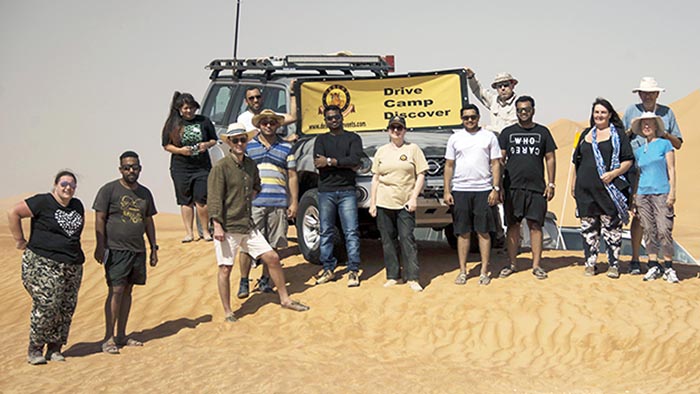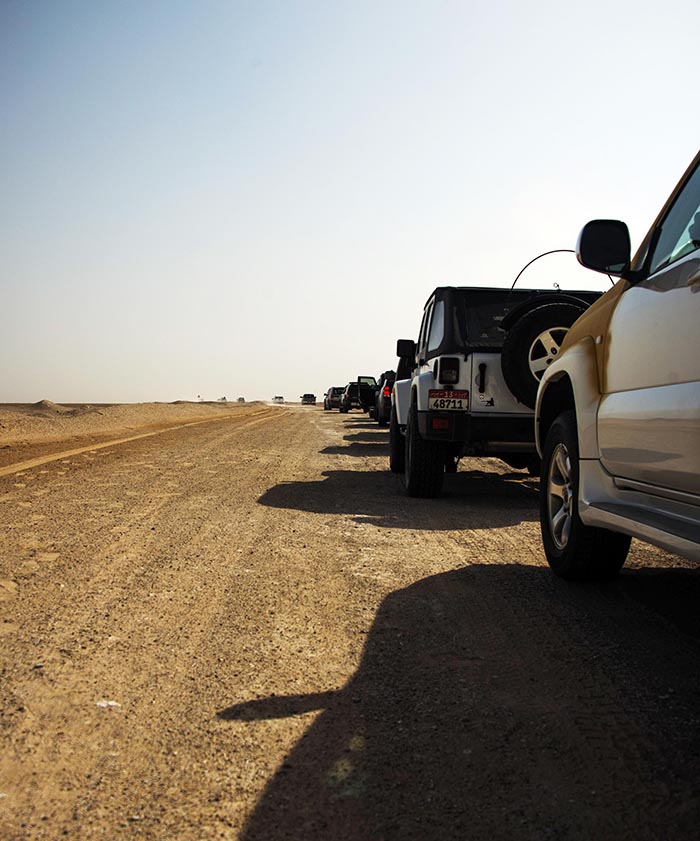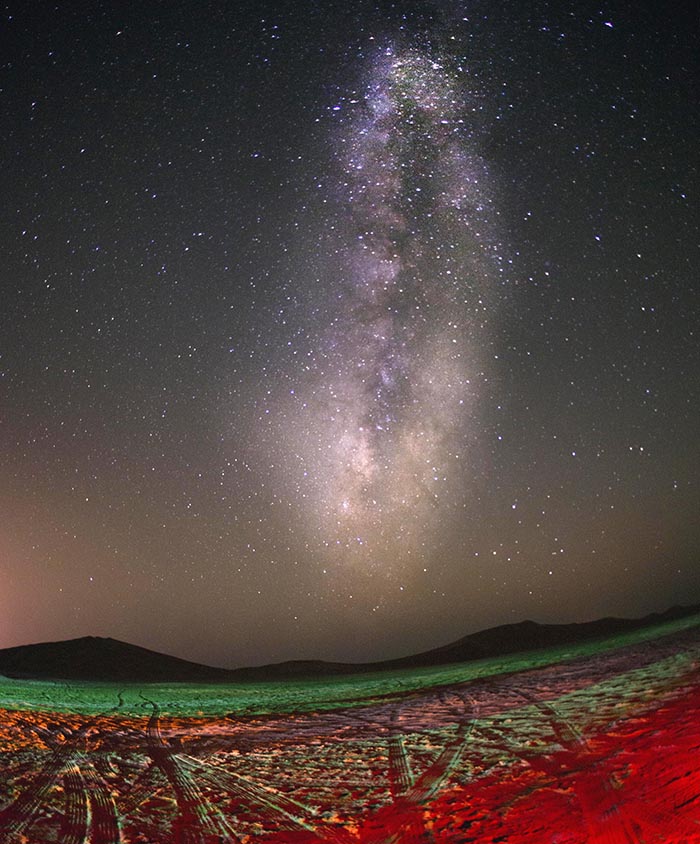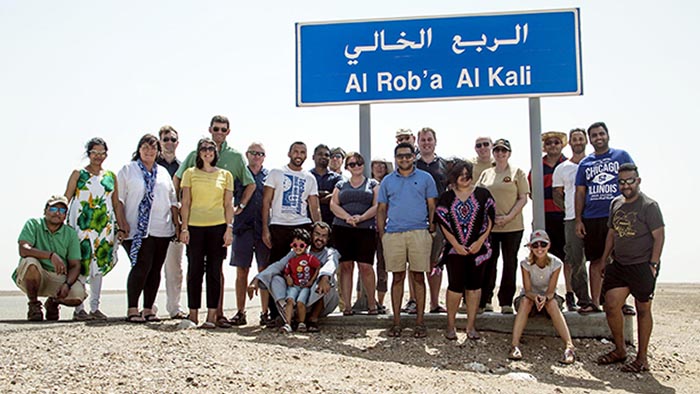Regular off roaders are likely to be used to the various places and types of terrain in the UAE and Oman; the desert is, after all, a giant sandpit. There is, however, a very special place which is like no other, a place where even with your trusty mechanical camel you get a sense of the challenge that the intrepid travellers of not so long ago had to face just to survive.

The Omani Rub Al Khali with the Umm As Sameem deep within its heart is such a place. The vast vista of unending sabkhas (salt flats) and towering starfish dunes is a sight to quicken the heartbeat of any dedicated off-roader, and while there are tracks through it making progress easy, there are still some challenges to be had and isolated retreats where you can escape the troubles and worries of the modern world, even in the “Mother of all Poisons” as the Umm As Sameem translates to.
My husband and I have made an annual trek through the Omani Empty Quarter since 2012 and we have always wanted to share this area with other outdoor enthusiasts; in September 2016, with our partners Ibex Adventures in Oman, we realised our dream and organised a two-night expedition in this, the most magical of locations.
After meeting in Ibri, we convoyed our group around 100kms to our first waypoint – a sign saying we had reached the “Roba Al Khali” (The Empty Quarter) – and we made a long stop for photos and to have our picnic lunch, Scottish style. I should perhaps explain that in Scotland the weather is often rainy and many picnics are consumed in the shelter of cars, but for our group last month, it was dust laden wind we had to shelter from!

Moving on, we crossed the enigmatic Umm As Sameem, a 50km wide sabkah, mentioned in Wilfred Thesiger’s ‘Arabian Sands’ and the focus of many Bedouin tales. Today there are rough tracks over the mud but back in the day of camel trains this area was best avoided as the terrain would have been almost impossible for camels to negotiate; not only that, but when you are in the middle of it, all you can see is sabkah as there are no distinguishing landmarks. There are stories of herds of goats being consumed by the Umm As Sameem and although we did not encounter any quick sands we did find evidence of road signs sinking ever lower into the mud, albeit over a period of years.
Arriving at our campsite shortly before sunset we set up our tents in the shade of a dune to shield us from early morning sunshine, before gathering around the campfire, eyes skyward to see the first of the Orionid meteors. There are a number of oil installations in the area but these were sufficiently far away to cause minimal light pollution. I mentioned before that this area was remote – the nearest settlement to our camp was Al Ghaba, over 150kms away, and the nearest towns are Adam and Ibri, both over 200kms distant – this is a journey you certainly should not consider on your own!

The next morning, after a leisurely breakfast at 8am, our group split into two convoys for some offroad driving. I led my group of 4x4s on a 100km drive south of the camp, through a dramatic dunescape lined with high, sharp “starfish” formations which towered over us; our drive was punctuated with short crossings of small technical dunes where the islands of sands converged on a white gravel plain. Unusually, we saw very few signs of life during the day with just a small Shrike bird landing on my roof-rack and a set of bleached camel bones on our return route to the camp.
My husband Neil took his group of AWD cars on a track based drive to explore a nearby rocky plateau as well as the outer reaches of the Umm As Sameem itself. There they did find signs of life by way of acacia trees, a cricket and certain signs that camels had visited recently!
By nightfall both groups had returned to the camp for a rest before tucking into an Omani feast cooked for us by our camp hosts from Ibex Adventures. We were fortunate to have the eminent archaeologist Dr Jeff Rose with us and he gave a short talk which had everyone enthralled with tales of the area thousands of years ago.
The next morning saw us strike camp and return to civilisation at Ghaba services where we fuelled up and bid a sad farewell to our fellow expeditioneers.

We hope to lead further expeditions to the Rub Al Khali and Umm As Sameem at least twice over the winter. To allow us to complete the expedition in a weekend, we have tweaked our itinerary to include a hotel stay in Ibri on the Thursday evening followed by a day of driving, one night camping and another half day drive before we return to the blacktop around 3pm on Sunday.
Full details will be posted on the Desert Diva Facebook page in due course, but in the meantime to enquire please email marina@desertdivaevents.com.
Words by: Marina Bruce
Photos by: Sarah Brooks

